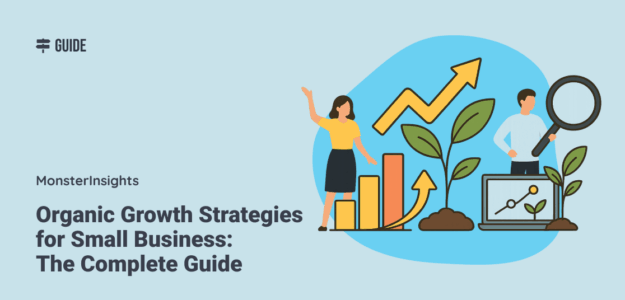Running a small business is hard enough without burning through cash on expensive ads. We get it, you’re wearing 15 different hats, your marketing budget is tight, and every dollar you spend needs to count.
That’s exactly why we created this guide. Over the years, the MonsterInsights team has helped thousands of small business owners grow sustainably using data-driven insights, not massive ad budgets. We’ve seen firsthand what works (and what doesn’t) when it comes to building real, long-term growth.
In this article, you’ll discover what organic growth really means for small businesses, why it’s your secret weapon against bigger competitors, and the exact strategies you can start using today. These are proven organic growth business tactics that work even if you’re a one-person operation or a small team.
In This Article:
- What Is Organic Growth?
- Why Smart Small Businesses Choose Organic Growth Marketing and Strategies
- How to Track Your Organic Growth for Your Business
- 10 Proven Organic Growth Business Strategies
- 1. Bring Back First-Time Buyers With Smart Follow-Ups
- 2. Turn Your Best Customers Into Superfans
- 3. Build Long-Term Relationships With Email Marketing
- 4. Turn Happy Customers Into Advocates
- 5. Optimize for AI and Search Engines
- 6. Create Content That Attracts Your Ideal Customers
- 7. Show Up Where Your Customers Already Are
- 8. Deliver Memorable Customer Experiences
- 9. Get More Reviews (Without Being Pushy)
- 10. Partner With Complementary Businesses
- Additional Resources About Organic Growth Marketing
- FAQs About Organic Growth Business Strategies
What Is Organic Growth?
Organic growth means growing your business using the resources you already have. No big acquisition deals. No massive ad budgets. Just smart strategies that help you sell more to existing customers and attract new ones naturally.
Think about it like this. You can either:
- Spend $5,000 on Facebook ads that stop working when the money runs out
- Invest that same $5,000 in strategies that keep bringing customers for years
I’ll choose option two every time.
Here’s what drives organic growth for small businesses in particular:
- Getting more repeat purchases from current customers
- Earning referrals and word-of-mouth recommendations
- Creating content that attracts customers through search engines
- Building an email list of people who want to hear from you
- Improving your product or service based on feedback
For small businesses, organic growth isn’t just a nice-to-have strategy. It’s often the difference between thriving and barely surviving.
While big companies can absorb the costs of failed ad campaigns or risky acquisitions, you don’t have that luxury.
Building organic growth gives you a sustainable foundation that doesn’t disappear when you pause spending or when market conditions shift.
Why Smart Small Businesses Choose Organic Growth Marketing and Strategies
If you’re a small business owner, you’ve probably heard the cautionary tales. A business relies heavily on paid ads. Everything looks great—until it doesn’t.
Maybe Facebook changes its algorithm, or iOS updates privacy settings, causing ad costs to spike. Maybe the business hits a rough month and has to pause ad spending. Whatever the trigger, sales exclusively driven by paid ads can drop hard and fast.
The businesses that survive these moments are the ones that build organic growth engines alongside their paid efforts. That’s the power of organic growth for small businesses:
- You keep more of what you earn. Research shows that organic leads cost 61% less than outbound leads. For a small business, that difference is massive.
- You’re not dependent on ad platforms. Facebook changes its algorithm? Google ups its ad prices? You’ll be fine because you’re not relying on them.
- You build real relationships. Big corporations can’t compete with the personal touch you offer. Organic growth lets you double down on that advantage.
Plus, it compounds over time. Your early efforts keep working. That blog post you wrote last year? Still bringing customers. That happy customer you delighted? Still referring friends.
How to Track Your Organic Growth for Your Business
Before we dive into specific strategies, let’s talk about tracking. You can’t improve what you don’t measure.
If you’re running a WordPress website, tracking your organic growth efforts doesn’t have to be complicated. MonsterInsights connects your site to Google Analytics and displays all your important metrics right inside your WordPress dashboard.
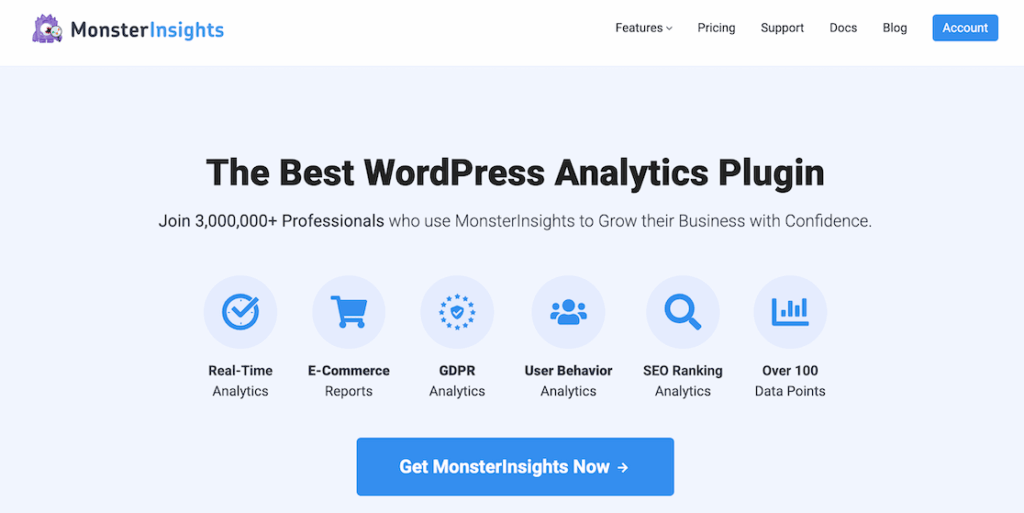
Here’s what MonsterInsights helps you track:
- See what content works. The Top Posts report shows which blog posts attract the most visitors. Create more of what resonates.
- Track your traffic sources. Know exactly how people find you—from Google, social media, email, or referrals. Focus on channels that actually bring customers.
- Monitor your search rankings. The Search Console integration shows which keywords you rank for and how those rankings improve over time. Learn how to connect Google Search Console to your site.
- Measure email campaign success. See which emails drive traffic and conversions. Send more of what works.
- Understand your visitors. Track new vs. returning visitors, engagement rates, and the customer journey through your site.
For small business owners juggling multiple responsibilities, having your organic growth metrics in one place saves hours every week. You can quickly check what’s working, make decisions, and get back to running your business.
Throughout the strategies below, I’ll show you exactly how to use MonsterInsights to track each tactic’s success.
Want to build a complete data-driven approach? Check out our guide on creating a data-driven marketing strategy.
Get started with MonsterInsights today.
10 Proven Organic Growth Business Strategies
Now let’s get into the specific strategies. These don’t require big budgets or fancy tools, just consistency and smart execution.
1. Bring Back First-Time Buyers With Smart Follow-Ups
Most small businesses focus all their energy on getting new customers. But here’s what they miss: repeat customers are significantly more valuable than one-time buyers.
Think about it. Someone who buys from you once is testing you out. Someone who comes back? They trust you. And that trust leads to more purchases, higher order values, and referrals to friends.
The key is following up quickly after the first purchase. Research shows that the faster you can get someone to make a second purchase, the more likely they are to become a long-term customer.
A simple follow-up email sent within 3-7 days with an incentive to purchase again can dramatically increase repeat purchase rates.

For example: “Thanks for your purchase! As a thank you, here’s 15% off your next order—valid for the next two weeks.”
Track it with MonsterInsights: Monitor your new vs. returning visitor ratio in the Overview report. If your retention strategies are working, you’ll see your percentage of returning visitors climb steadily. This metric tells you if customers are coming back or if you have a “leaky bucket” problem.
For more information, see our complete guide to effective email marketing.
2. Turn Your Best Customers Into Superfans
Your best customers aren’t always the ones who spend the most money. In fact, focusing on short-term revenue can hide who your truly valuable customers are.
The real question is: who are your Most Valuable Customers (MVCs)?
These are the people who are easy to work with, come back again and again, and happily tell others about your business. They’re not just making purchases—they’re helping your business grow organically.
To find your MVCs, look beyond single transactions and measure Customer Lifetime Value (CLV) — the total profit a customer generates over their entire relationship with your business.
A customer who spends $100 once looks great in the short term. But a customer who spends $50 three times a year for five years? That’s $750 total — and they’re worth 7.5x more to your business over time.

When small business owners start digging into their numbers, they usually find the same pattern: around 10–20% of customers generate the majority of profits. Those are your High-Value Customers (HVCs) — the backbone of your business.
Once you know who they are, a great organic growth strategy is to make them feel special. This can something as simple as a thank you note, or as elaborate as a multi-tier rewards program.
3. Build Long-Term Relationships With Email Marketing
Email gives you a direct line to people who raised their hand and said they want to hear from you.
They’re not scrolling past your message in a crowded feed. They opened their inbox and chose to read what you sent. That’s powerful.
Plus, email delivers incredible results. Research shows that email marketing generates an average return of $36 for every $1 spent. That’s a 3,600% return!
To start building long-term relationships with your customers via email, you’ll need to choose an email platform such as Constant Contact or Drip. These are some of my personal favorites because they are user-friendly and offer eCommerce features.
Then, you’ll need to think of a compelling reason for your customers to subscribe and create an opt-in form. After that, you’re ready to start growing your list and sending emails.
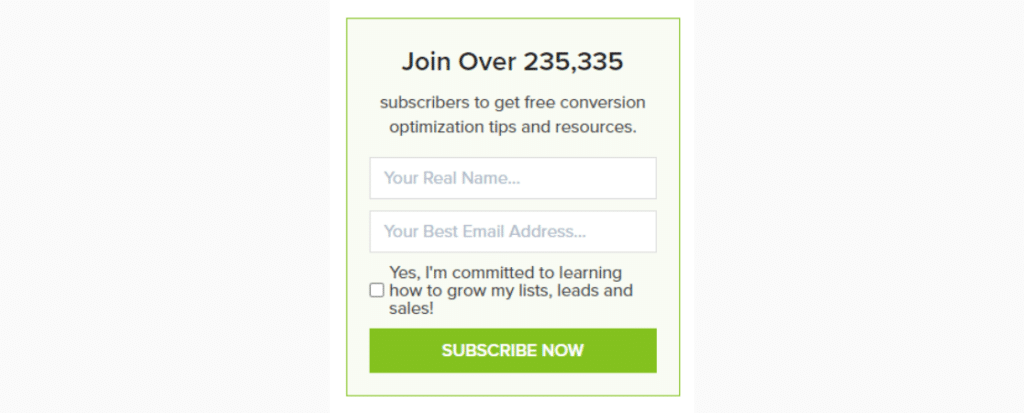
Check out our complete guide on how to build and grow your email list for in-depth instructions.
4. Turn Happy Customers Into Advocates
Your happiest customers want to help you succeed. You just need to make it easy for them.
Think about the last time you recommended a business to a friend. You probably did it because you had a great experience and wanted to help. Your customers feel the same way. They’ll spread the word if you deliver exceptional value, make the experience memorable, and give them an easy way to share.
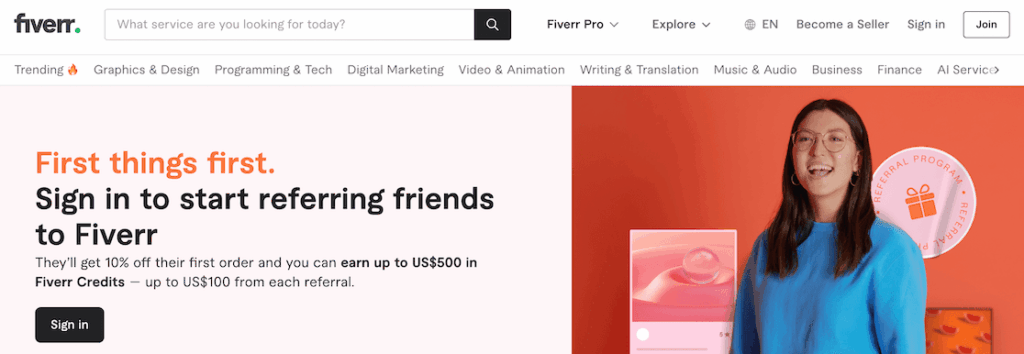
You don’t need a fancy program. For referrals, you can start by offering a small incentive for both the referrer and new customer—a discount, free add-on, or store credit. For reviews, send direct links to your profiles on Google, Yelp, or industry-specific platforms.
Here are five ways to make sharing easy and natural:
- Make it effortless. Provide direct links, pre-written text they can customize, or social media graphics they can share with one click.
- Show appreciation. Thank people publicly (with their permission) and privately. Recognition matters as much as rewards.
- Remind gently. People are busy and forget. A friendly reminder isn’t pushy—it’s helpful.
- Share their reviews. When customers leave great reviews, share them on your website and social media. This encourages others to do the same.
Pro Tip: Ask for referrals and reviews right after a customer achieves a result or expresses satisfaction. That’s when enthusiasm is highest.
5. Optimize for AI and Search Engines
As search engines and AI tools evolve, AI SEO has become increasingly important. But most organic growth marketing experts will agree that traditional SEO still has a big role to play.
With that in mind, you’ll want to make sure your website and any other digital content are optimized for both AI platforms and traditional search engines like Google.
If you’re a beginner, I recommend using a straightforward tool like All in One SEO, which provides you with powerful tools for local SEO, on-page SEO, and even technical SEO.
For example, you can easily add schema markup without any technical experience.
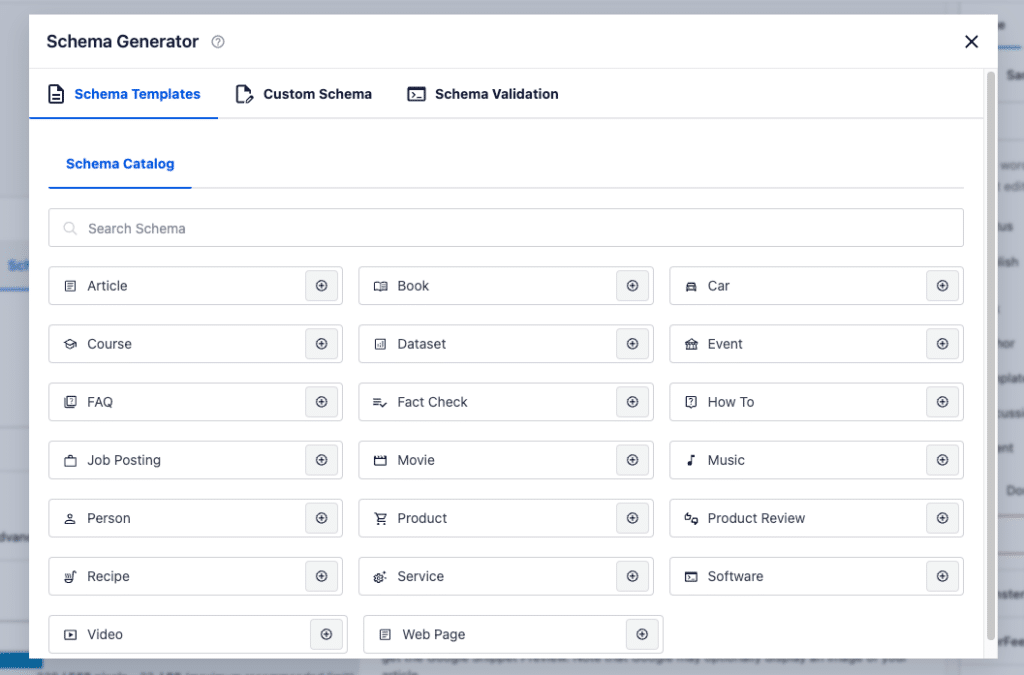
For more information, check out one of our SEO guides:
- How to Do Keyword Research for SEO: Quick-Start Guide
- Google Analytics SEO Hacks to Increase Search Traffic
- WooCommerce SEO Tips to Increase Search Rankings Today
And if you’re using MonsterInsights, don’t miss our articles on Search Engine Ranking Reports and using Google Search Console for keyword research.
6. Create Content That Attracts Your Ideal Customers
Content marketing is one of the most effective organic growth strategies for small businesses. When done right, it brings qualified customers to your site month after month without ongoing ad spend.
SEO is evolving, but expertise still wins.
Yes, AI overviews appear in search results now. Google’s algorithms change constantly. But here’s what hasn’t changed: people still search for solutions, and businesses that provide helpful, expert content still win. Your specific local knowledge and real-world experience are advantages AI and big national sites can’t replicate.
The key is creating comprehensive content around topics your customers actually search for.
If you run an HVAC company, write seasonal maintenance guides and energy efficiency comparisons. If you own a pet supply store, create breed-specific care guides. If you’re an accountant, publish tax planning strategies for specific industries.
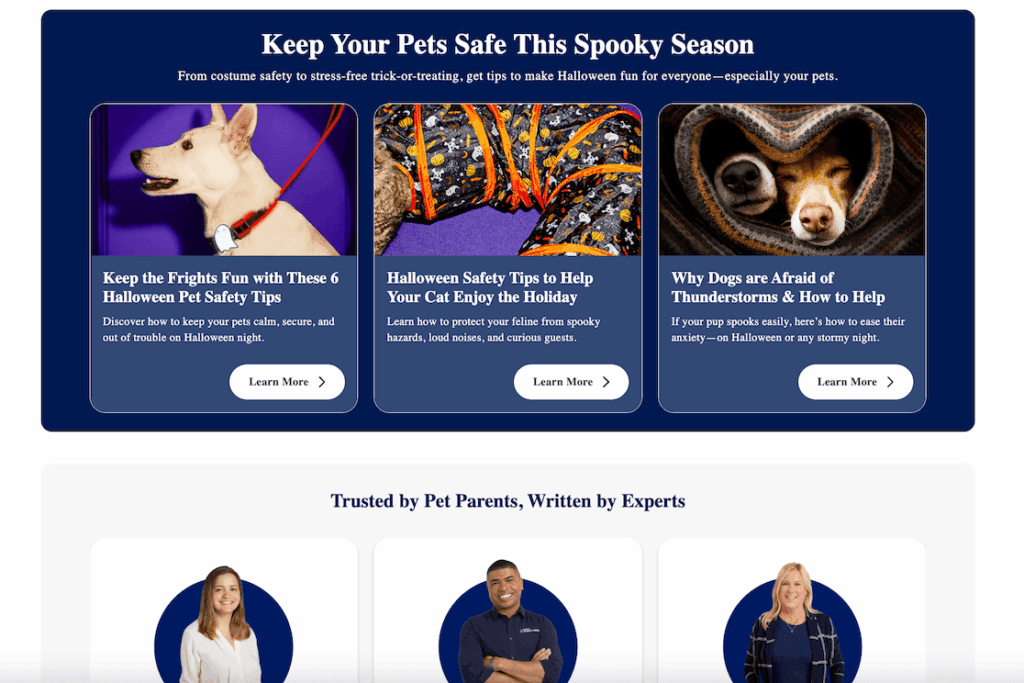
Focus on areas where you have genuine expertise, create in-depth articles, and include real examples from your experience. Look at what competitors rank for and identify gaps you can fill better with your local knowledge.
7. Show Up Where Your Customers Already Are
You don’t need to be everywhere. Just be where your customers are.
Local Facebook groups, community forums, and neighborhood social media pages are goldmines for small businesses. The key is being genuinely helpful without pitching. Answer questions. Share useful information. Build trust.
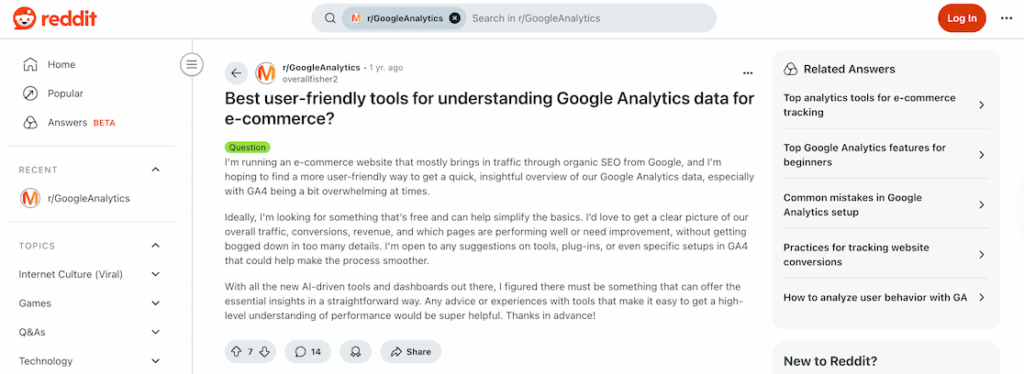
Your options:
- Join Facebook groups your customers are in
- Answer questions on Reddit or local community forums
- Comment on local social media posts
- Attend (or host) local meetups or events
The key? Be genuinely helpful. Don’t pitch. People will come to you.
8. Deliver Memorable Customer Experiences
Great customer service isn’t just good business—it’s one of your most powerful marketing tools.
Every interaction with a customer is an opportunity to create a story they’ll share. People don’t talk about average experiences. They talk about extraordinary ones—both good and bad. Your goal is to create so many positive experiences that customers can’t help but tell others.
Here are some ways to turn support into loyalty:
- Respond quickly. Speed shows you care. Even if you can’t solve the problem immediately, acknowledge it fast.
- Go above and beyond. Do something unexpected. Ship replacements before returns arrive. Throw in a free bonus. Surprise and delight.
- Make it personal. Use their name. Reference past conversations. Show that you see them as a person, not a ticket number.
- Follow up after resolution. Check in a few days later to make sure everything’s still good. This extra touch creates lasting impressions.
Pro Tip: Own your mistakes publicly and make them right. I’ve seen businesses turn angry customers into devoted fans by acknowledging problems, apologizing genuinely, and fixing things fast. People respect honesty and responsibility.
9. Get More Reviews (Without Being Pushy)
Reviews are organic growth gold for small businesses. According to BrightLocal, 98% of consumers read online reviews for local businesses.
But most small business owners don’t ask for them because it feels awkward.
The key is to make it easy. For instance, you can:
- Send a direct link to your review page
- Ask right after a positive interaction
- Consider a small thank-you (a discount on next purchase)
- Respond to every review (good or bad)
The difference between businesses that get lots of reviews and those that don’t often comes down to one thing: asking consistently and making it easy.
10. Partner With Complementary Businesses
You don’t have to grow alone. Find businesses that serve your same customers but don’t compete with you.
Cross-promotion partnerships are particularly effective for local small businesses. Wedding vendors (photographers, planners, florists, venues) often partner successfully.
Home service providers (landscapers, painters, electricians) can refer each other. Fitness studios and health food stores work well together.
How to find partners:
- List businesses your customers also use
- Reach out with a simple partnership idea
- Start with a trial (recommend each other once)
- Track what works and double down
Track it with MonsterInsights: When you partner with other businesses, track the referral traffic from their websites. MonsterInsights shows you exactly how many visitors and conversions each partner sends your way. This data helps you identify your most valuable partnerships and strengthen those relationships.
That’s it! I hope this article helped you learn about organic growth business strategies!
Additional Resources About Organic Growth Marketing
Want to dive deeper into growing your business organically? Check out these helpful guides:
- Growth Marketing Hacks Guaranteed to Boost Your Traffic
- How to Use Data-Driven Insights for Marketing Growth
- Best Digital Marketing Tools for Big Growth
- How to Use AI in Marketing Analytics
Not using MonsterInsights yet? Get started today!
Finally, stay connected with us on YouTube for the latest Google Analytics and WordPress tips and tutorials.
FAQs About Organic Growth Business Strategies
What’s the difference between organic and paid growth?
Organic growth comes from unpaid efforts like content marketing, SEO, and referrals. Paid growth comes from advertising. Organic takes longer but costs less and builds sustainable momentum. Paid delivers faster results but requires ongoing investment.
How long does organic growth take?
Most businesses see meaningful results within 3-6 months. SEO typically takes 4-6 months to gain traction. Content marketing and email building show results faster—often within weeks. The key is consistency.
Can small businesses compete with big brands organically?
Definitely! Small businesses can be more personal, respond faster, and connect more authentically. Focus on serving a specific niche really well. Local SEO and community building are areas where small businesses frequently outperform larger competitors.
What’s the best tool to track organic growth?
For WordPress users, I recommend MonsterInsights. It brings all your metrics into your WordPress dashboard—traffic sources, content performance, search rankings, and visitor behavior. You get complete data without complexity.
How do I know which organic strategies are working?
Use MonsterInsights to monitor traffic sources, content performance, and conversion paths. Review your data monthly and adjust based on what’s actually working, not what you think should work.
